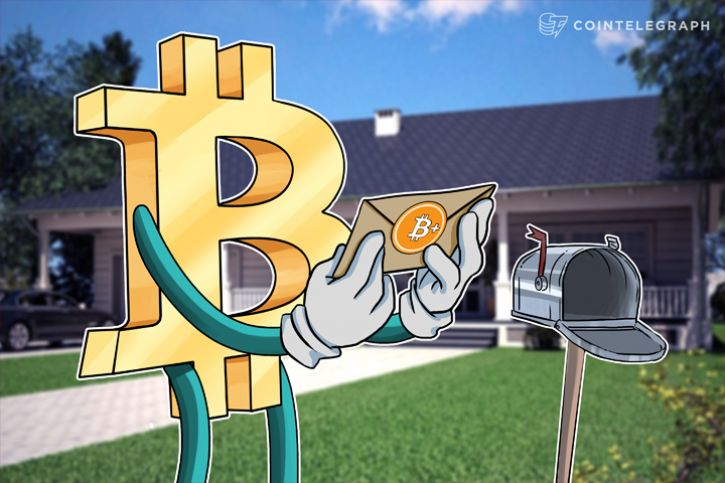Meet Bitcoin Plus –
The Next Great Cryptocurrency

Let’s face it,
Bitcoin is currently dominating the market, but altcoins cannot be just brushed off, they are maturing as well and are ready to provide a keen and tough competition. There is one coin, however, which, as claimed by its founders, cannot even be called an “altcoin.” Meet Bitcoin Plus — the next great cryptocurrency.
Bitcoin, but “reincarnated”
The history of Bitcoin Plus goes back to early 2014 when the coin was launched through an ICO held on the Poloniex Exchange. However, it turned out that the ICO was carried to fund not the cryptocurrency but holidays of the original developer who escaped with collected funds somewhere in the south direction. Later on, Bitcoin Plus went into rehab as a few truly dedicated community members formed a team, hired a coder to fix the wallet and introduced the sustainability plan.
Yule Mills, one of the team leaders at Bitcoin Plus, explains to Cointelegraph:
“The original developers created a great coin but it appeared they had ulterior motives, therefore they soon abandoned the coin. I was the original investor and have loved it since I first found out about it in May 2014. I think it is Bitcoin but reincarnated with many improvements and rarities, hence the added Plus in the name of the coin.”
How it will drive the market wild
The cryptocurrency has evolved greatly, especially during the last year. Originally, XBC was purely a Proof-of-Stake coin, however, a bunch of recent updates included the ability to secure the network using Proof-of-Work, therefore Bitcoin Plus is what is now known as a hybrid POS/POW. This means that if the network ever faces a serious issue, things can be moved along manually by switching on Proof-of-Work for a short period.
Bitcoin Plus has one mln coins to respond to 21 mln Bitcoins, it is characterized by a much faster block processing time and can handle eight times more transactions than Bitcoin. Mills points out that the best feature of Bitcoin Plus is the 20 percent annual staking until all one mln coins have been staked. In his opinion, this feature alone is currently driving the market wild.
Mills comments:
“Bitcoin Plus went from $.08 in January 2016 to a high of $131 just last month. That's serious.”
Bitcoin Plus, scalability issues minus
There is an opinion that what is good for Bitcoin has a positive impact on other cryptocurrencies. But what about the problems currently faced by Bitcoin, are they any relevant in the rest of the cryptocurrency space? Scalability has always been an issue for Bitcoin but recently the network has been running out of capacity, transaction fees have been getting higher, while the speed of processing was significantly decreasing.
The SegWit vs. BU debate has been going on and on for months and it doesn’t look like we are going to see a conclusion any time soon. How do these block games affect Bitcoin Plus? Well, XBC has a much shorter average block processing time — 60 seconds compared to that of Bitcoin, therefore the Bitcoin Plus network is able to handle 10 times more transactions every 10 minutes. Besides, the block size limit of Bitcoin Plus is much larger standing at 1.5 MB. The average transaction size of Bitcoin Plus is very similar to its predecessor, therefore every block is able to fit as many as 3,030 transactions or 50.5 transactions per second.
The Bitcoin Plus team assures that it will take a long time before users have to start worrying about any scalability issues.
Mills says to Cointelegraph:
“Regarding scaling issues, the original Bitcoin can handle, as fact, less than seven transactions per second compared to Bitcoin Plus which can handle 50+ transactions per second. We are keeping a close eye on SegWit vs. Unlimited and, truthfully, I don't think either idea is a good one. The thing about Bitcoin Plus that works is we have a team that agrees on things. If Bitcoin Plus needs to scale we will scale to Visa level if needed.”
Engaging community into development of the coin
The current team of Bitcoin Plus consists of several community members who run the website, BitcoinTalk Forum Thread, Block Explorers, 24/7 nodes and ensure the sustainability of the coin. The team is open, accessible and their intentions are transparent. It also seems that they are trying to engage the community in the development of the coin, offering ideas for updating of the network for voting and extensively reporting on the completion of upvoted ideas.
Isn’t it what the cryptocurrency space is all about? Absolute freedom, flexibility and the ability to reach consensus? With all this packaged in Bitcoin Plus, it is expected that the project will attain great success.
Mills concludes:
“Bitcoin would be an altcoin if it wasn't so successful. I don't consider Bitcoin Plus an altcoin. It's a force to be reckoned with, and you are going to see Bitcoin Plus on a mass scale soon.”
Chuck Reynolds
Contributor
Alan Zibluk Markethive Founding Member










